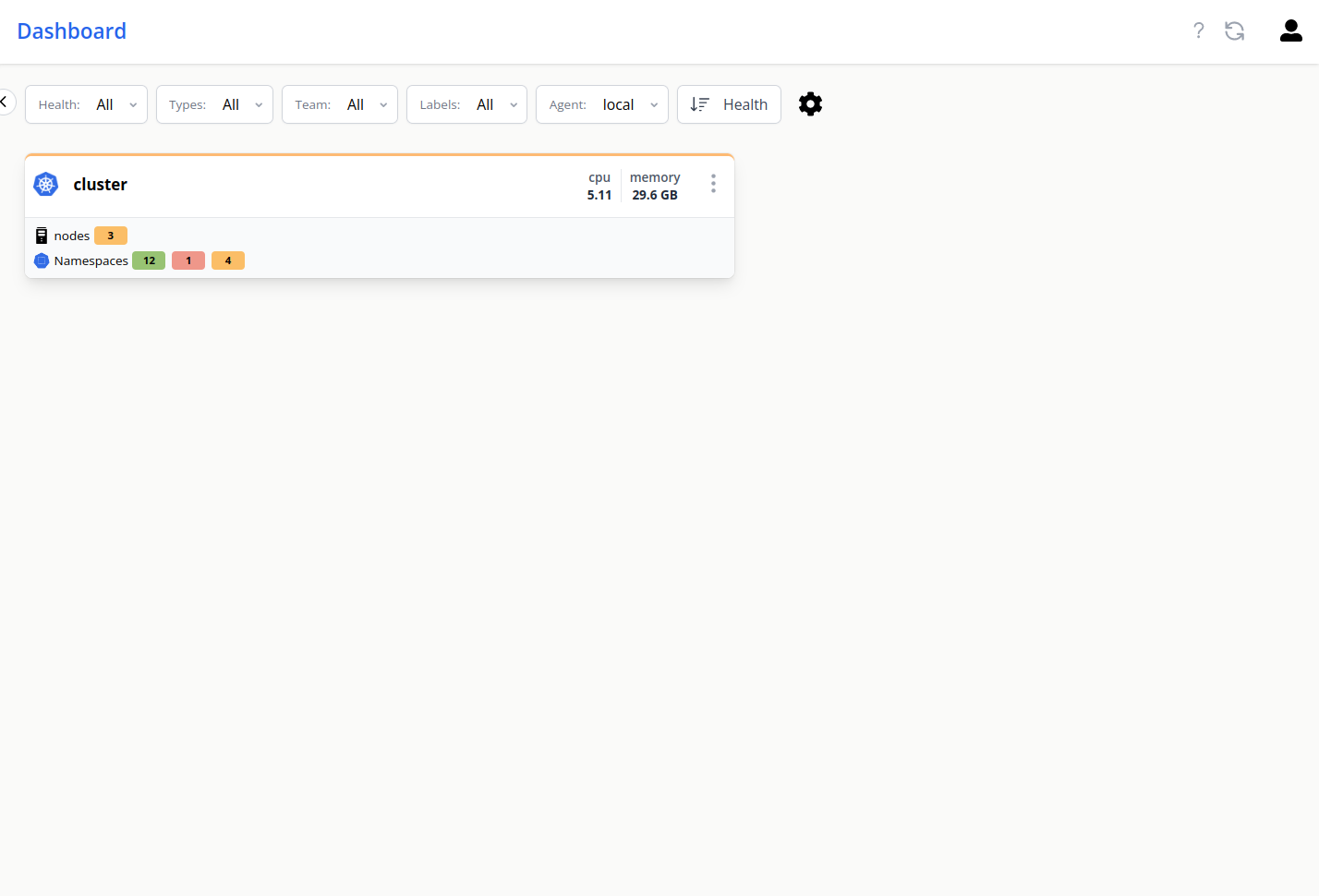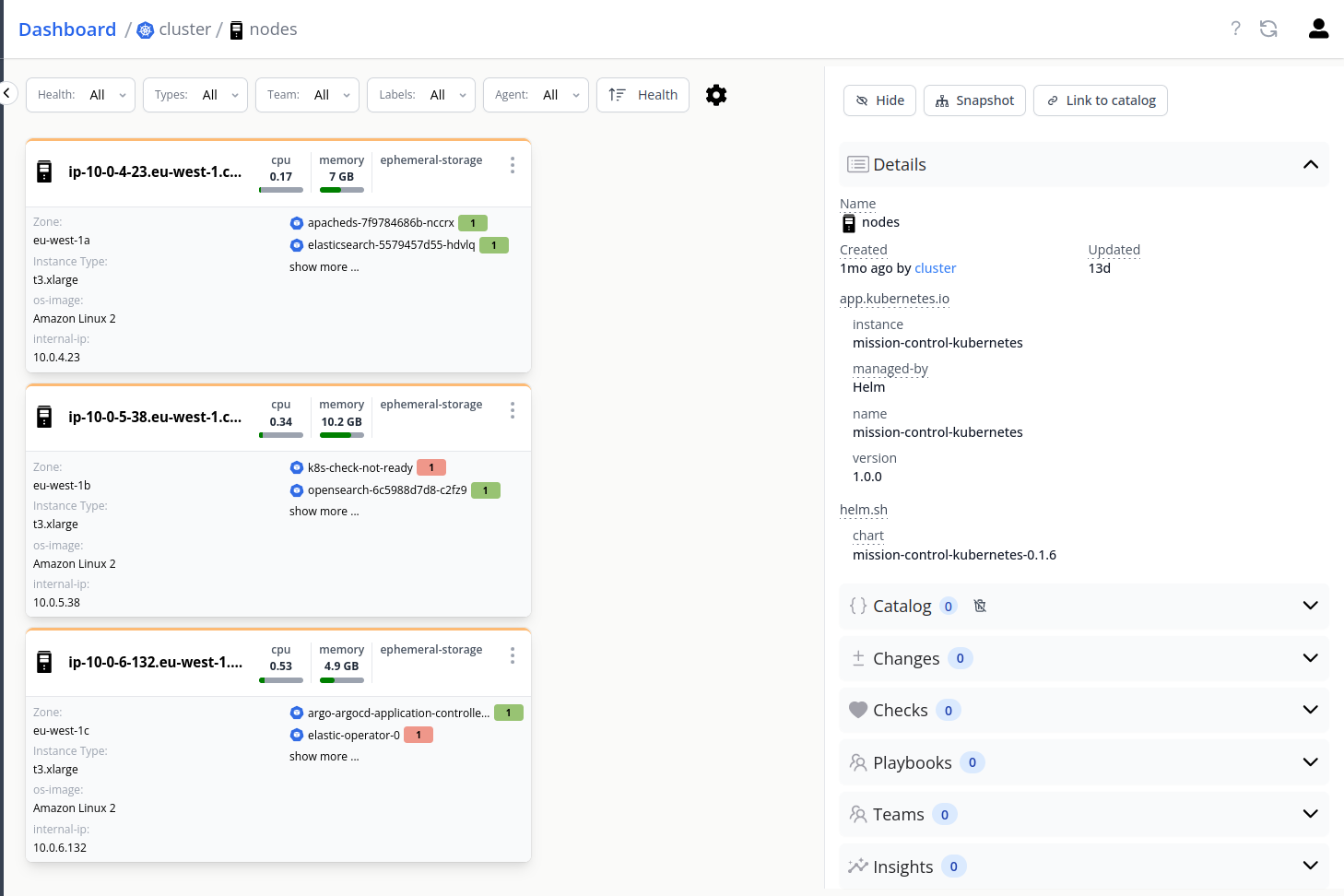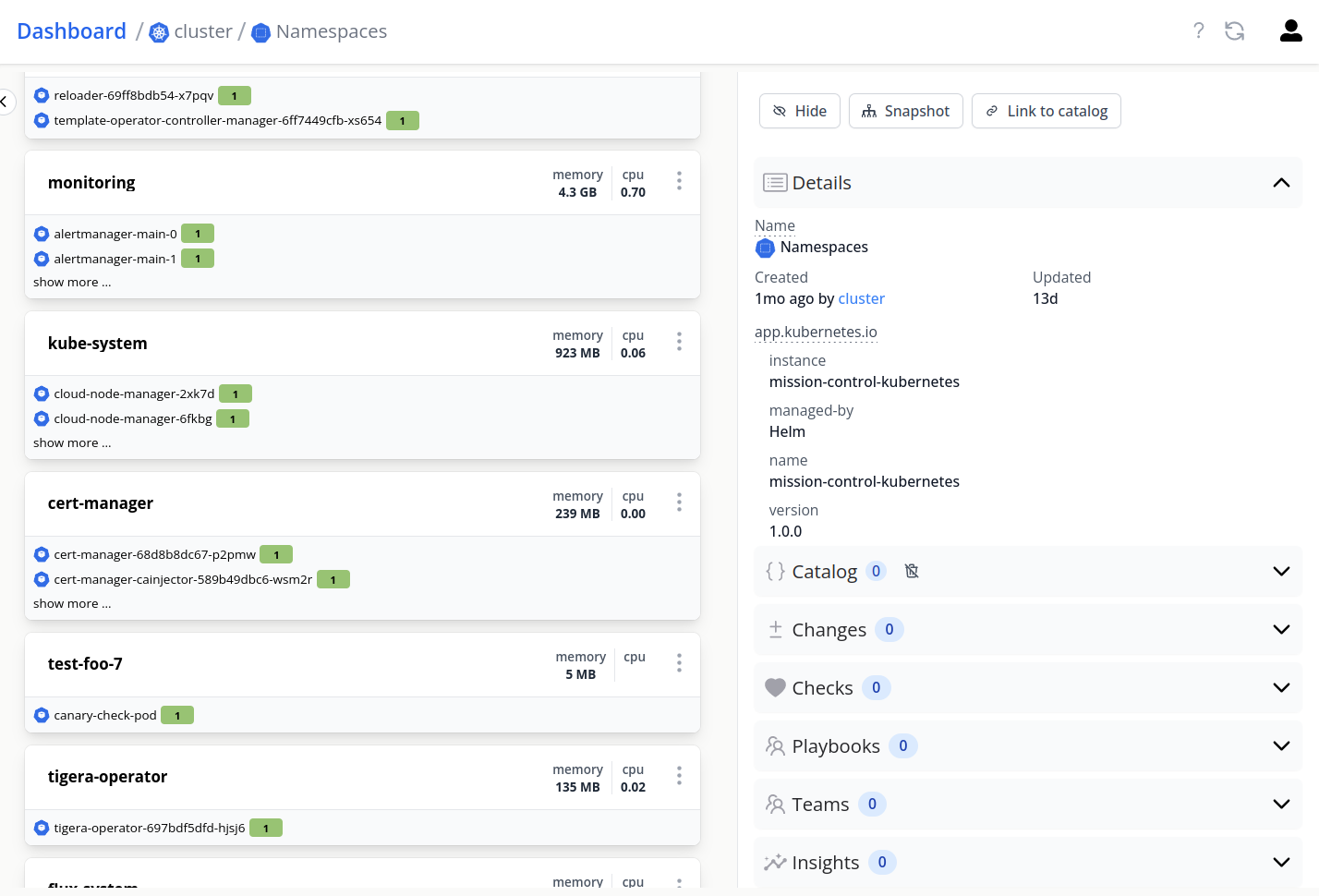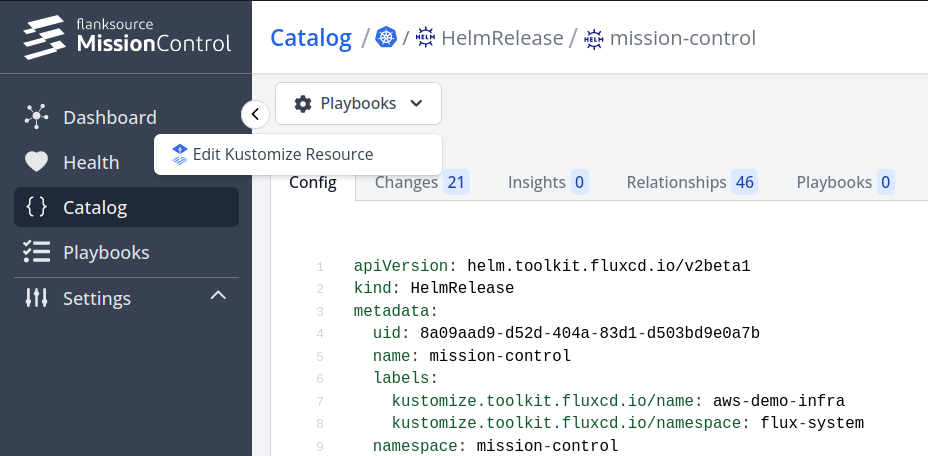Kubernetes
Setup
The Kubernetes helm chart installs a catalog scraper and a topology for a kubernetes
helm repo add flanksource https://flanksource.github.io/charts
helm repo update
helm install mission-control-kubernetes flanksource/mission-control-kubernetes
After running helm install you should get a success message:
NAME: mission-control-kubernetes
LAST DEPLOYED: Thu Feb 14 19:00:32 2024
NAMESPACE: default
STATUS: deployed
REVISION: 1
TEST SUITE: None
NOTES:
Kubernetes topology and scraper added
When you go to the dashboard now, you can now see a cluster topology:

On clicking the topology, you can access nodes, namespaces and pods


And we also have added a catalog scraper which populated our catalog

Values
This document provides an overview of configurable values for deploying the Kubernetes Scraper component using Helm.
Configuration
The following table lists the configurable parameters and their default values:
| Parameter | Description | Default |
|---|---|---|
nameOverride | Overrides the name of the chart. | "" |
fullnameOverride | Overrides the full name of the chart. | "" |
labels | Additional labels to apply to resources. |
Topology
| Parameter | Description | Default |
|---|---|---|
topology.name | Topology name. | "cluster" |
topology.schedule | Topology schedule. | "@every 5m" |
Scraper
| Parameter | Description | Default |
|---|---|---|
scraper.name | Scraper name. | "kubernetes" |
scraper.clusterName | Cluster name for scraping. | "kubernetes" |
scraper.defaultScrapeExclusions | Default scrape exclusions. | ["APIService", "PodMetrics", "NodeMetrics", "endpoints.discovery.k8s.io", "endpointslices.discovery.k8s.io", "leases.coordination.k8s.io", "podmetrics.metrics.k8s.io", "nodemetrics.metrics.k8s.io", "controllerrevision", "certificaterequest", "orders.acme.cert-manager.io"] |
scraper.scrapeExclusions | Additional scrape exclusions. | ["Secret", "customresourcedefinition"] |
scraper.eventExclusions | Event exclusions. | ["SuccessfulCreate", "Created", "DNSConfigForming"] |
scraper.transform.changes.exclude | Transformation changes exclusions. | ["details.source.component == \"canary-checker\" && details.reason == \"Failed\"", "details.source.component == \"canary-checker\" && details.reason == \"Succeeded\""] |
scraper.severityKeywords.error | Keywords indicating error severity. | ["failed", "error"] |
scraper.severityKeywords.warn | Keywords indicating warning severity. | ["backoff", "nodeoutofmemory"] |
scraper.retention.changes | Retention changes. | [{"name": "ReconciliationSucceeded", "count": 10}] |
scraper.relationships | Kubernetes Relationships to create via name, namespace and kind. Kubernetes Relationships | Helm and Argo |
Playbooks
Edit flux resources
This feature allows you to edit any kustomize resource managed via flux in the UI and then create a Pull Request back to source with your changes.
To use this, the Kustomization file must have originAnnotations.
| Parameter | Description | Schema | Default |
|---|---|---|---|
playbooks.edit_kubernetes_manifests.enabled | Enable this to have a playbook to edit and commit flux resources back to git | bool | false |
playbooks.edit_kubernetes_manifests.git_connection | Connection string to be used with git credentials | Connection | "" |
After enabling the playbook, you can see a Edit Kustomize Resource option in playbooks for any catalog item that is linked to flux

We can then edit this resource in UI, write our own commit message and it will automatically open a Pull Request to the corresponding repo

Make sure the token in the Connection provided has access to create pull requests in the repositories that might have the manifests. We support GitHub, GitLab and Gitea